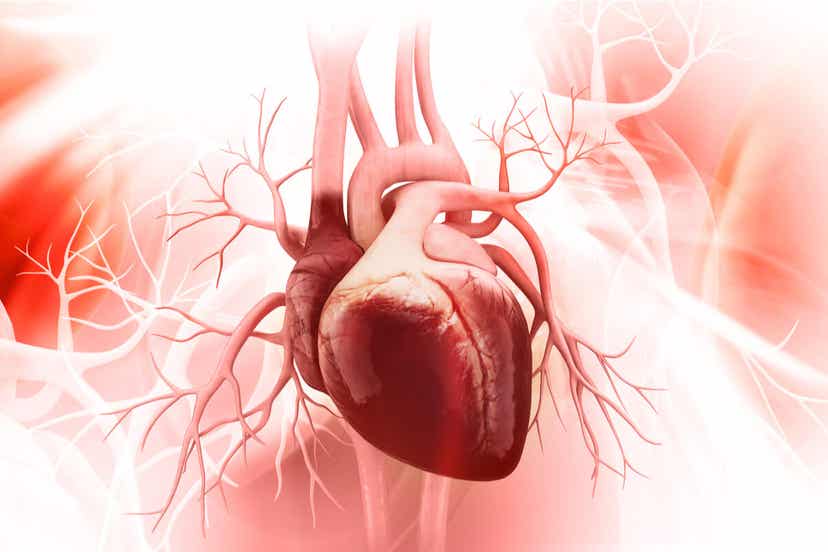Low-Impact Cardiovascular Training: Exercises and Recommendations


Written and verified by Fitness and yoga instructor Eva María Rodríguez
Many people associate cardiovascular exercise with high-impact physical activities, such as running or jumping. However, it’s possible to do low-impact cardiovascular training, through exercises such as walking, cycling, swimming, among others.
The advantage of these types of exercises is that they don’t cause additional stress on the joints thanks to the lack of impact. Therefore, they’re ideal for people with physical limitations or those who are recovering from injuries. What should you know about them? Discover some exercises and recommendations.
What are the benefits of low-impact cardio training?
Low-impact cardiovascular training offers almost the same health benefits as more demanding activities. In fact, for some people, they’re even better. What are the main effects?
Cardiovascular health
Like any form of physical exercise, low-impact cardio training contributes to cardiovascular health care. Its regular practice reduces the risk of conditions such as high blood pressure, hypercholesterolemia, heart attack, stroke, among others.
In any case, if you have a previous diagnosis of heart disease, it’s essential that you consult your doctor or a specialist. The professional will be the one to determine which activities are most suitable for you and at what level of intensity.

Weight loss
In conjunction with a healthy and balanced diet, this form of cardiovascular training contributes to maintaining a healthy and balanced weight. Although the intensity and time spent exercising affects calorie burn, low-impact activities prevent the effects of a sedentary lifestyle.
Brain health
According to a publication in the journal Neurology, low-impact cardiovascular training benefits brain health and reduces the risk of dementia. It also provides the following benefits:
- Increases blood flow
- Decreases the chances of stroke
- Improves memory
- Optimizes thinking capacity
At the same time, it also combats the decline in brain function with age and helps protect against the development of Alzheimer’s disease.
Chronic back pain
Low-impact cardiovascular training helps reduce chronic back pain, especially activities such as swimming and water aerobics. The movement promotes blood flow and helps to care for and improve posture, in addition to promoting muscle elasticity and muscle work.
Read this also: 10 Habits that Cause Back Pain
Low-impact cardiovascular exercises
A low-impact cardio workout encompasses various exercises. Their advantage is that they’re suitable for all groups of people, from children to older adults. They’re even recommended for people with physical difficulties. Of course, it’s always best to consult a professional before starting to practice them.
Cycling: indoor and outdoor
Cycling’s an excellent cardiovascular exercise, whether you practice outdoors or indoors. One thing that makes this type of training stand out, especially indoor cycling (spinning), is that the intensity can be regulated. This way, you can perform workouts of varying intensity, depending on the needs and conditions of each individual.
Elliptical training
Along with indoor cycling came a type of training called indoor walking, which is performed on an elliptical machine. This training follows the same structure as indoor cycling classes. It can be regulated in intensity and is much gentler for the knees, besides involving more of the upper body in the workouts.
Swimming
A study published in the Journal of Exercise Rehabilitation shows the health benefits of swimming. Not only does it help you take care of your cardiovascular health, but it also improves muscle strength and helps prevent ailments. Of course, it’s suitable for everyone, as you can regulate the intensity adapts it to almost all needs.

Yoga
You may not realize it, but yoga also falls within the context of cardiovascular training, as it’s usually oriented towards working on flexibility and strength. However, there are disciplines within yoga that include low-impact aerobic work, such as vinyasa flow.
Read this also: Why is it Good to Practice Yoga?
Walking
Finally, walking’s a complete cardiovascular exercise in all its facets, from a simple walk to the Olympic discipline of power walking. That said, for true cardiovascular conditioning to take place, you must walk at a good pace for a long period of time.
What should you remember about low-impact cardiovascular training?
In order for true low-impact cardiovascular training to take place, the first thing to keep in mind is intensity. So, if the exercise is low intensity, the benefits will be lower and the workout will require more time to really feel the benefits.
Even so, in certain conditions, this type of training is preferable to a sedentary lifestyle. In fact, it’s a good way to actively rest during intense training programs.
In that regard, a good way to monitor intensity is to use a heart rate monitor and work in a range between 65 and 80% of the maximum heart rate. This will let you know if the level of intensity or effort you’re making is sufficient in order to achieve benefits.
Finally, it’s worth remembering that, in case of pre-existing health problems, it’s best to consult a specialist first. A prior evaluation can contribute to a safe and effective form of training.
All cited sources were thoroughly reviewed by our team to ensure their quality, reliability, currency, and validity. The bibliography of this article was considered reliable and of academic or scientific accuracy.
- Tanaka H, Shindo M. The benefits of the low intensity training. Ann Physiol Anthropol. 1992 May;11(3):365-8. doi: 10.2114/ahs1983.11.365. PMID: 1642737.
- Said M, Abdelmoneem M, Alibrahim M, Elsebee M, Kotb A. Effects of diet versus diet plus aerobic and resistance exercise on metabolic syndrome in obese young men. Journal of Exercise Science & Fitness. 2020;18(3):101-108.
- Swift DL, Johannsen NM, Lavie CJ, Earnest CP, Church TS. The role of exercise and physical activity in weight loss and maintenance. Prog Cardiovasc Dis. 2014;56(4):441-447. doi:10.1016/j.pcad.2013.09.012
- Slow, steady increase in exercise intensity is best for heart health — much more is not always much better [Internet]. American Heart Association. 2020 [cited 5 May 2021]. Available from: https://newsroom.heart.org/news/slow-steady-increase-in-exercise-intensity-is-best-for-heart-health-much-more-is-not-always-much-better?preview=a716
- Scheede-Bergdahl C, Minnella E, Carli F. Multi-modal prehabilitation: addressing the why, when, what, how, who and where next?. Anaesthesia. 2019;74:20-26.
- Morville T, Sahl R, Trammell S, Svenningsen J, Gillum M, Helge J et al. Divergent effects of resistance and endurance exercise on plasma bile acids, FGF19, and FGF21 in humans. JCI Insight. 2018;3(15).
- Nokia M, Lensu S, Ahtiainen J, Johansson P, Koch L, Britton S et al. Physical exercise increases adult hippocampal neurogenesis in male rats provided it is aerobic and sustained. The Journal of Physiology. 2016;594(7):1855-1873.
- Haskins J. Living healthier through low-impact exercise [Internet]. The Nation’s Health. 2018 [cited 5 May 2021]. Available from: https://www.thenationshealth.org/content/48/7/16
- Mortimer J, Stern Y. Physical exercise and activity may be important in reducing dementia risk at any age. Neurology. 2019;92(8):362-363.
- Lee BA, Oh DJ. Effect of regular swimming exercise on the physical composition, strength, and blood lipid of middle-aged women. J Exerc Rehabil. 2015;11(5):266-271. Published 2015 Oct 30. doi:10.12965/jer.150242
- Nilsen T, Holtermann A, Mork P. Physical Exercise, Body Mass Index, and Risk of Chronic Pain in the Low Back and Neck/Shoulders: Longitudinal Data From the Nord-Trondelag Health Study. American Journal of Epidemiology. 2011;174(3):267-273.
This text is provided for informational purposes only and does not replace consultation with a professional. If in doubt, consult your specialist.








